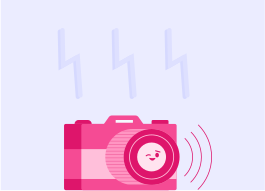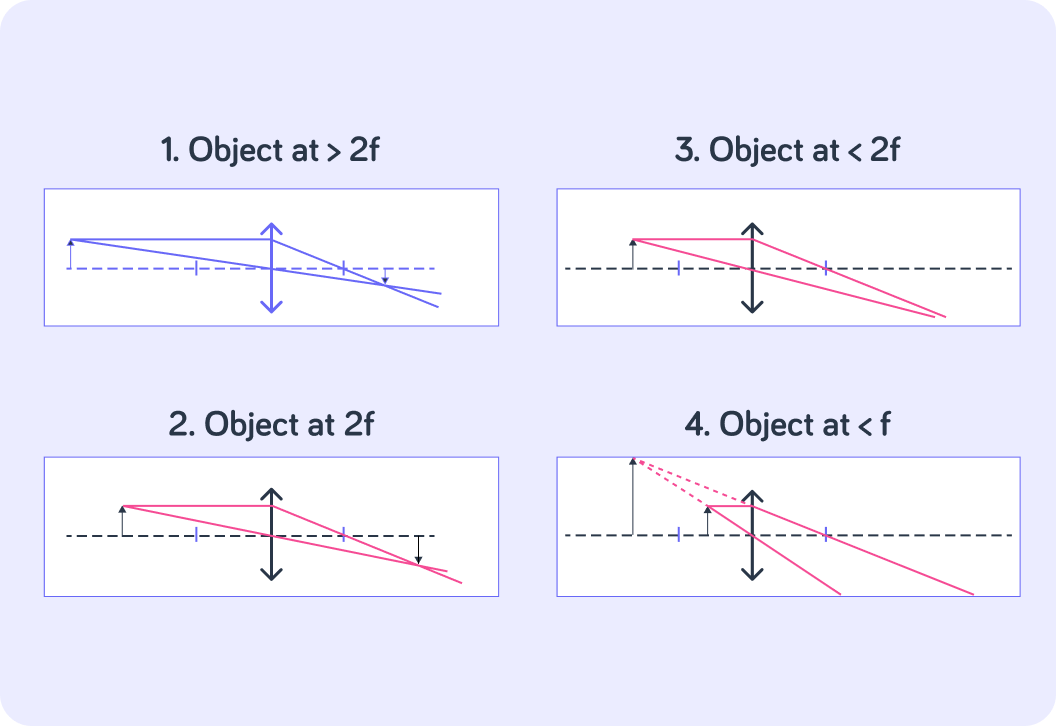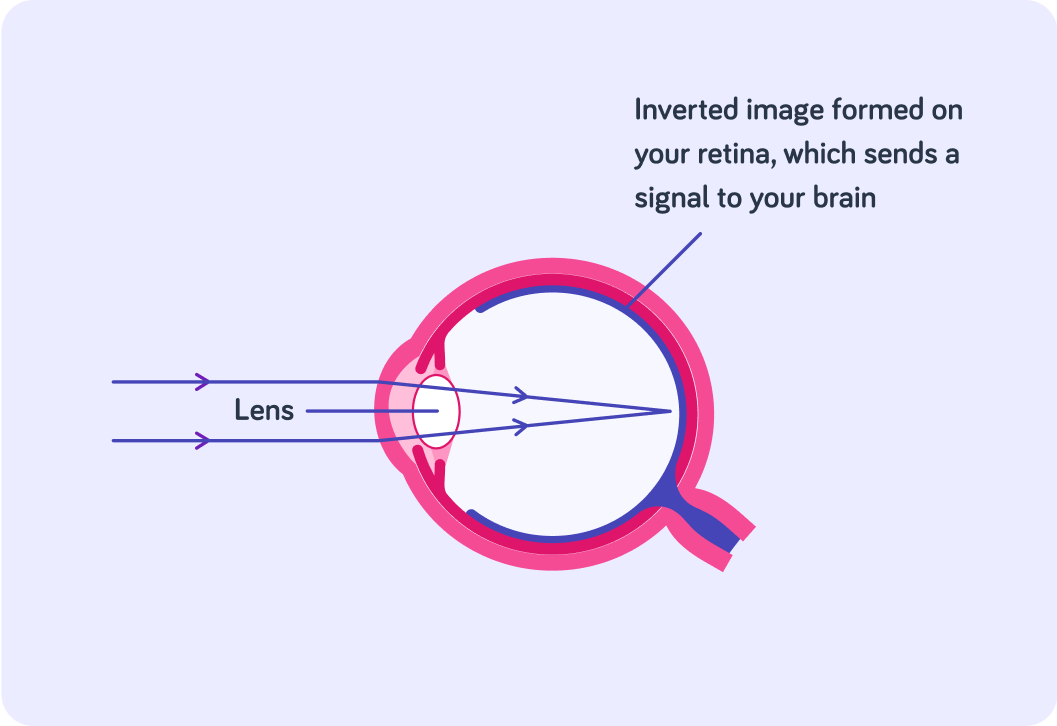YOU ARE LEARNING:
The Eye as a Lens

The Eye as a Lens
Eyes contain a convex lens which refracts light rays into an inverted image that is incident on the retina.
In this lesson, we are going to look at how our eyes behave like lenses.
To begin, let's recall how lenses work. Which of the following options is the best description of how a lens works?

What do you call a lens that bends light rays, all parallel to the normal, towards the principal axis?

What is another name for a converging lens?

The eye also refracts light to create an image, like the lens in a camera. Can you guess which type of lens an eye would be?

Let's recall how images are formed by convex lenses. Which of these cases do you think is applicable for the eye as a lens? Think about how far away objects are in relation to your eye.
Answer 1, 2, 3, or 4.


For an object, O, at a distance of O>2f away from the lens (figure 1), which option best describes the image?
A) The image is real, inverted and the same size. B) The image is real, inverted and diminished. C) The image is real, upright and the diminished.
Answer A, B or C.


True or false? The images your eye creates are upright.

Here you can see a picture of the lens in an eye.
Notice how the light rays are getting refracted as they enter the eye.

What colour do you think the lens in an eye is?

To sum up, eyes contain a convex lens which refracts light rays into an inverted image that is incident on the retina.
